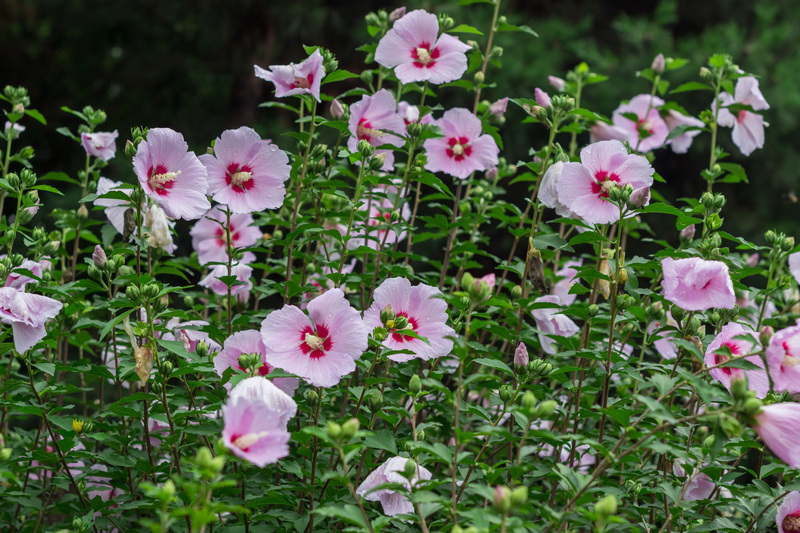Setting the Foundation for a Garden Resurrection
Posted on 21/08/2025
Setting the Foundation for a Garden Resurrection
Is your once-thriving garden now a shadow of its former self? Do weeds, tired soil, and withering plants greet you instead of verdant life? Setting the foundation for a garden resurrection is the transformative first step to breathing new life into your outdoor sanctuary. Whether you're a seasoned horticulturist or a first-time grower, this comprehensive guide will walk you through reviving your garden from the ground up--literally!

Why Resurrect Your Garden?
Revitalizing an old, neglected, or unproductive plot is more than aesthetic improvement--it's an act of environmental stewardship. A flourishing garden provides habitat for pollinators, naturally improves air quality, and enhances emotional well-being. If you're committed to reviving a garden, you'll also benefit from fresher produce, lower grocery bills, and a true sense of pride.
- Enhance biodiversity and attract beneficial wildlife
- Improve soil quality and reduce erosion
- Promote relaxation and mindfulness
- Grow nutritious, organic produce at home
Step 1: Assessing Your Garden's Current State
A successful garden revival starts with an honest evaluation. Walk through your outdoor space, notebook in hand, and document observations such as:
- The health and type of existing plants
- Extent of weed infestation
- Areas of compacted soil or erosion
- Sun, shade, and water patterns
- Presence of pests or disease
It's crucial to identify strengths and weaknesses before setting any renovation plan. Use this assessment as your reference point for all future steps during your garden resurrection process.
Step 2: Clear the Canvas
Removing Weeds and Debris
Overgrown weeds, leftover mulch, and plant debris can choke new growth and harbor pests or diseases. Begin your garden rebirth by removing all unwanted material:
- Pull weeds by the root to prevent regrowth
- Dispose of diseased plants safely
- Clear rocks, trash, and old mulch
- Prune back shrubs and trees as needed
*Tip:* Using a garden fork or spade, loosen and aerate the soil as you clear. This will make it easier to work and prepare the bed for new plantings.
Step 3: Soil Testing and Amending
Healthy soil is the true backbone of any revived garden. To maximize success, test your soil for pH, texture, and nutrient levels. Soil test kits are widely available at garden centers or through local extension services.
- Ideal pH for most gardens: 6.0 - 7.0
- Check for nitrogen, phosphorus, and potassium deficiencies
- Assess soil drainage and compaction
Amending the Earth
Once you've gotten your results, it's time to invest in improvements:
- Add organic matter like compost or aged manure to boost fertility
- Apply lime or sulfur to correct soil pH
- Work in sand or peat moss to enhance clay or sandy soils
_Underline your success_ by dedicating effort towards soil health--rejuvenated earth produces resilient, vigorous plants.
Step 4: Planning Your Revived Garden Layout
Now comes the enjoyable part: dreaming and scheming! Before planting a single seed, create a scaled map or sketch of your garden. Ask yourself:
- Which areas receive full sun, partial shade, or deep shade?
- Will you incorporate raised beds, vertical structures, or containers?
- Are walkways and access points needed for easier maintenance?
- Do you prefer formal symmetry or a more relaxed, natural look?
Crop rotation, companion planting, and biodiversity are key design principles for a successful garden resurrection. Consider plant sizes, colors, bloom times, and requirements for light and water. Remember, the best gardens are dynamic, evolving spaces.
Step 5: Rejuvenating the Soil Structure
Double Digging and Mulching
For gardens with especially compacted or poor soils, double digging can work wonders. Dig trenches and incorporate organic matter a spade's depth below the surface to improve aeration and drainage. When the beds are prepped, protect your investment with a generous layer of organic mulch such as shredded bark, leaf mold, or straw.
- Mulch suppresses weeds and conserves moisture
- As it breaks down, mulch feeds the soil organically
Step 6: Selecting Plants for Success
Carefully choose plants that suit your microclimate, soil, and sunlight. For a flourishing garden renewal:
- _Favor native species_ that thrive with minimal intervention
- Select disease-resistant and drought-tolerant varieties
- Mix perennials, annuals, shrubs, and groundcovers for continuous interest
- Group plants with similar needs for efficient watering and care
Before planting, soak root balls in water, gently loosen roots, and set at the proper depth. Remember to space generously--young plants grow quickly and need room.
Step 7: Watering and Fertilizing Your Resurrected Garden
Establishing new plants or restoring weakened specimens requires diligent, yet not excessive, watering. Moisture management is crucial in the early months:
- Water deeply at the soil level, not on foliage
- Early morning is the best time to reduce fungal risk
- Use organic fertilizers to boost growth without burning roots
- Continue mulching to regulate soil temperature and retain water
_Consistency is key_--too much or too little water can undo your hard work of garden rebirth.
Step 8: Continuous Care and Maintenance
A newly rejuvenated garden needs consistent care to realize its full potential. Stay vigilant with maintenance routines:
- Weed regularly to prevent takeover
- Inspect for insects and diseases--treat organically where possible
- Remulch annually and fertilize as needed based on plant response
- Prune and deadhead to promote healthy growth and further blooms
Garden Monitoring and Journaling
_Keep a gardening journal_ to record progress, issues, and what works for your unique space. Tracking rainfall, bloom times, and insect activity helps refine your approach to future garden foundation work.
Bonus Tips for Sustainable Garden Resurrection
- Build compost bins for ongoing soil enrichment
- Harvest rainwater to reduce water bills and environmental impact
- Plant pollinator-friendly flowers to support bees and butterflies
- Encourage beneficial insects with insect hotels and native habitats
- Consider no-dig gardening to preserve soil ecosystem integrity
Remember: Gardening is a long-term relationship with nature. With patience and attention to these foundational principles, your outdoor sanctuary will evolve into a flourishing haven.

Frequently Asked Questions About Garden Resurrection
How long does it take to revive a neglected garden?
The timeline can vary dramatically based on the initial condition of the garden and your level of effort. Most home gardeners see visible improvements within one to two growing seasons after applying these foundational steps diligently.
Can I resurrect a garden without using chemical fertilizers?
Absolutely! In fact, organic amendments like compost, cover crops, and natural mulches are preferred for building long-term soil health and sustaining biodiversity in your garden resurrection.
What's the best time of year to start reviving a garden?
Early spring and late fall (in temperate regions) are ideal. The weather is milder, and soil organisms are active, ensuring optimal conditions for establishing new plants and enriching the earth.
Is it possible to resurrect a very small or urban garden?
Yes! Even tiny spaces can burst with life. Focus on container gardening, vertical structures, and high-yield crops. Urban gardeners can use raised beds, window boxes, or repurpose found objects for planting.
Conclusion: The Reward of Garden Renewal
_Setting the foundation for a garden resurrection is an act of hope and commitment._ By clearing, amending, and thoughtfully planning each step, you create the optimal environment for plants, wildlife, and yourself. No matter your garden's starting point, dedication, and a deep understanding of foundational principles will produce rewarding and visible transformation.
Start your garden's second life today, and enjoy the endless rewards of renewal, beauty, and abundance.

